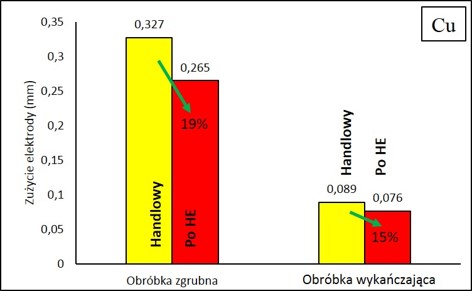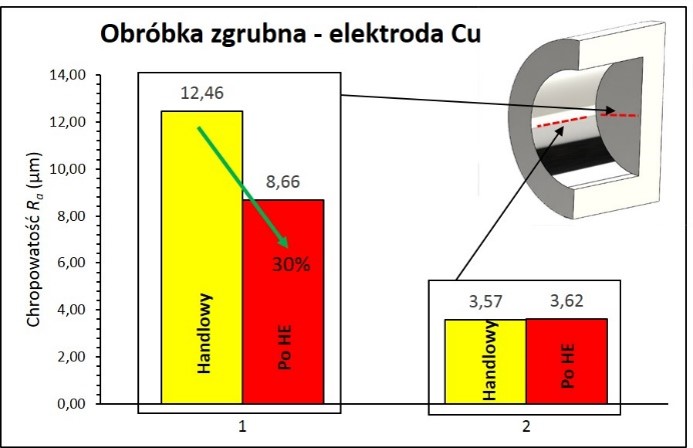Tango IV
The aim of the project is to develop a new generation of electrodes for the Electrical Discharge Machining (EDM) process based on the research results of the completed base project. The realisation of the project will consist in the optimisation of the process of high-pressure hydrostatic extrusion (HE) of 99.95% copper and CuCrZr alloyed copper, aimed at obtaining materials with ultra fine microstructure characterised by reduced susceptibility to EDM wear occurring in the EDM process. The realization of this goal will be possible through the use of an unconventional method of high-pressure plastic forming in the form of a hydrostatic extrusion process, which is characterized by the production of materials with a pronounced structural anisotropy in the form of a morphology of elongated grains in the direction of the extrusion axis.
The basis for undertaking the research in the presented project were the results of the authors’ research carried out and described within the framework of the basic project entitled: “The influence of micro anisotropy on the structure of materials in the direction of the extrusion axis”. “Influence of microstructure anisotropy of hydrostatically extruded materials on their thermo-physical properties”, (Prelude 9, No: 2015/17/N/ST8/01471). The study observed a clear effect of the fragmentation of the microstructure, as well as its morphology, on changing the properties of the deformed materials, including thermophysical properties such as thermal diffusivity (a), thermal conductivity (λ) and specific heat (cp). As a result of the applied high-pressure plastic processing using the HE method, ultrafine-grained microstructures were obtained in the materials studied, characterized by a very large number of accumulated surface, linear and point defects having a significant effect on limiting the heat transfer and thus changing the studied thermophysical properties. These changes reached even several percent in case of cross-section analysis and several percent in case of longitudinal cross-section analysis. This confirmed the influence of anisotropy and structure morphology characteristic of the HE process on the change of thermophysical properties.
All these premises allowed us to undertake preliminary studies on the wear of materials after the HE process, under EDM plunge hollowing conditions. The authors performed hollowing tests on 45HNMF steel with an electrode made of 99.95% copper in the form of a cylinder with a diameter of 20 mm. The subject of the analysis was the electrode wear, as well as the surface quality of the hollowed element (machined surface). Both results were verified and related to analogous tests performed with an electrode made of 99.95% copper in an undeformed state. A clear effect of material application after the HE process was observed in both tested parameters. A decrease in wear by about 20% was obtained, (Fig. 1) with a simultaneous improvement in the quality of the machined surface, for which the roughness decreased by up to 30%, (Fig. 2).

Figure 1: Wear of 99.95% copper electrode after HE process.

Figure 2: Surface roughness in rough machining using copper electrode after HE process
